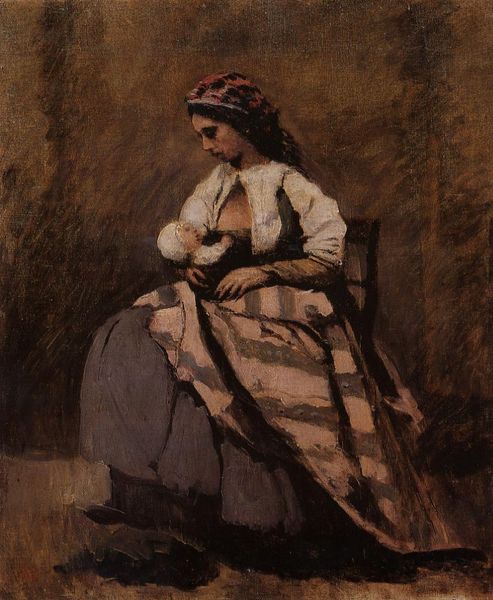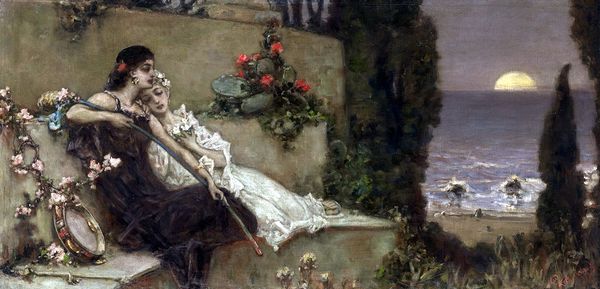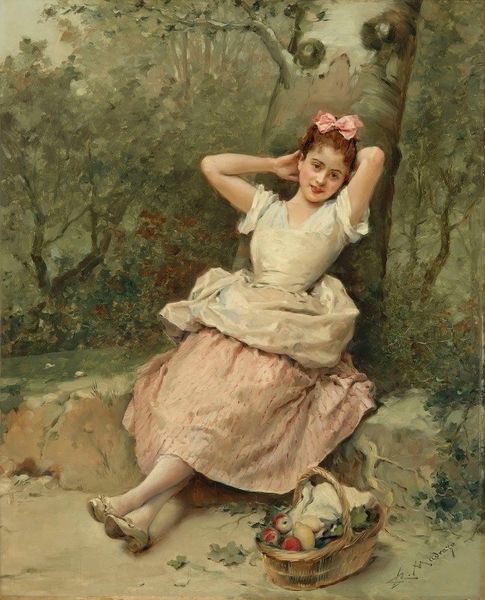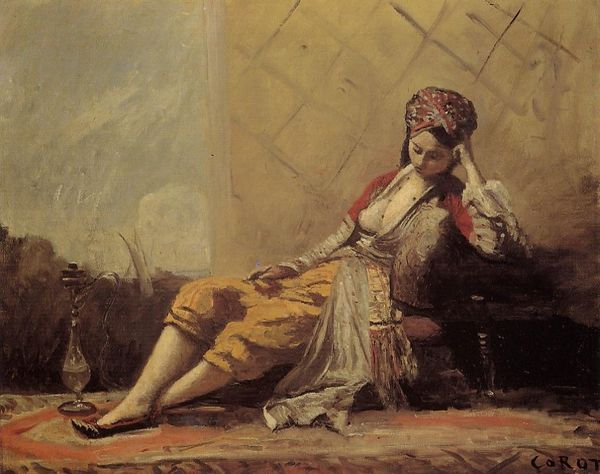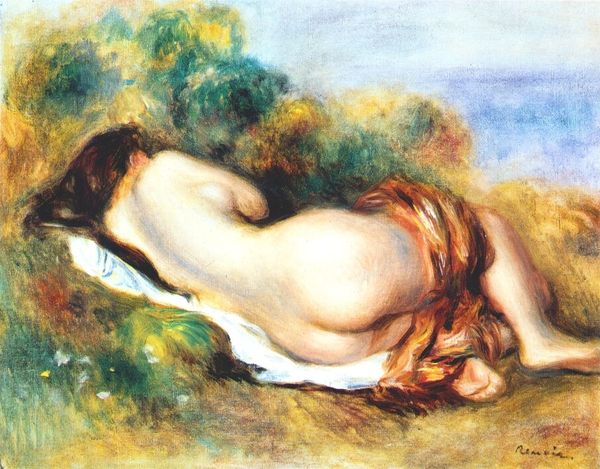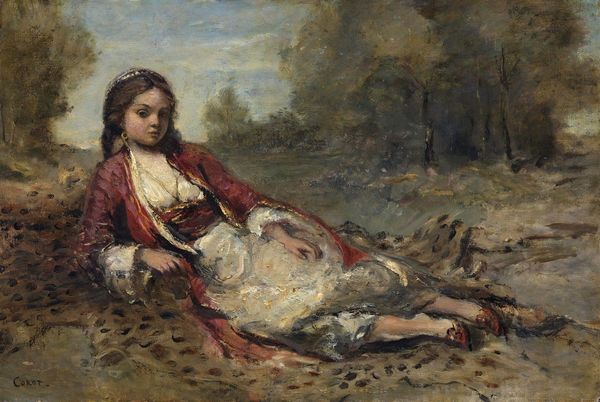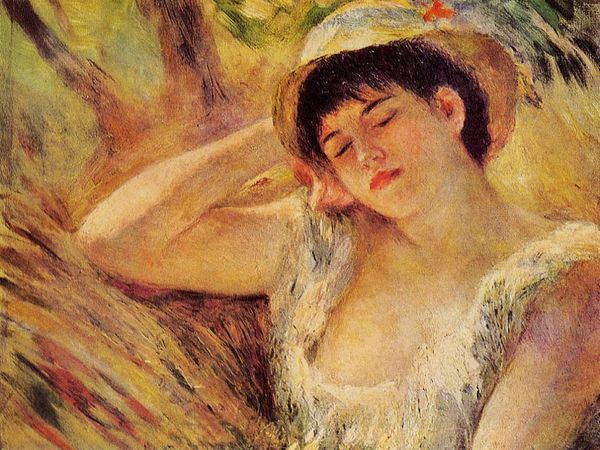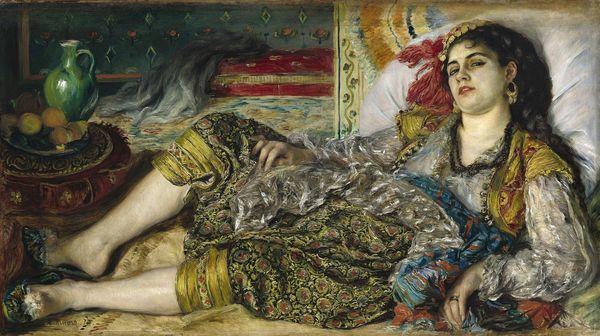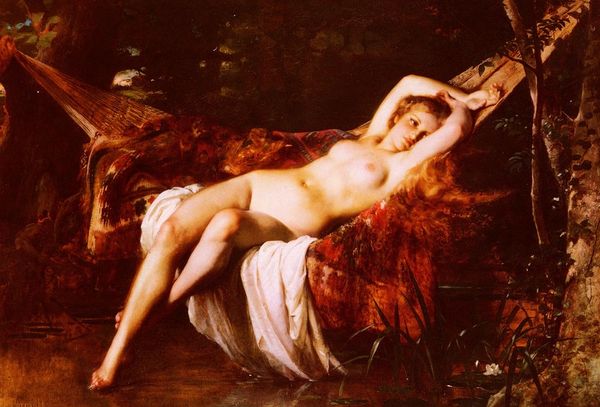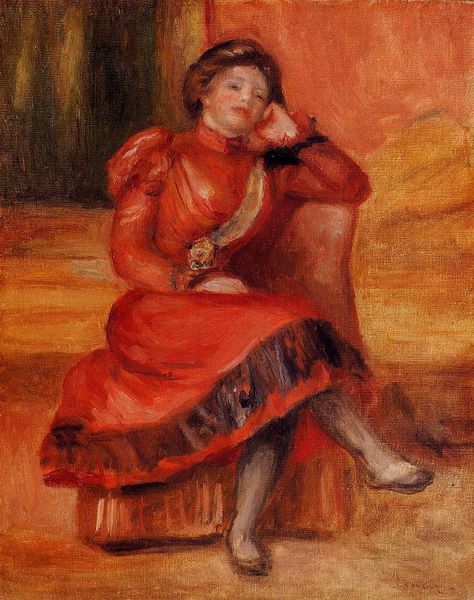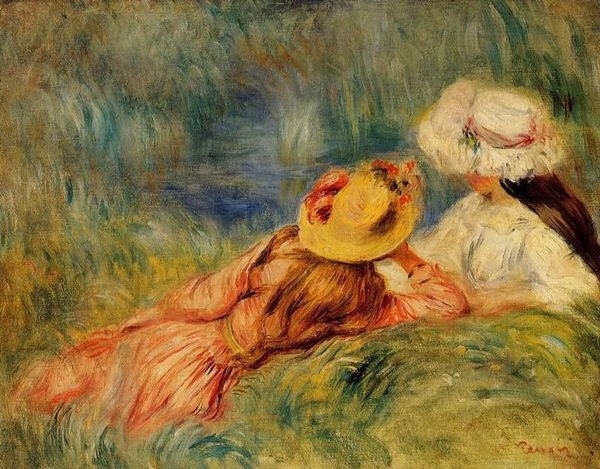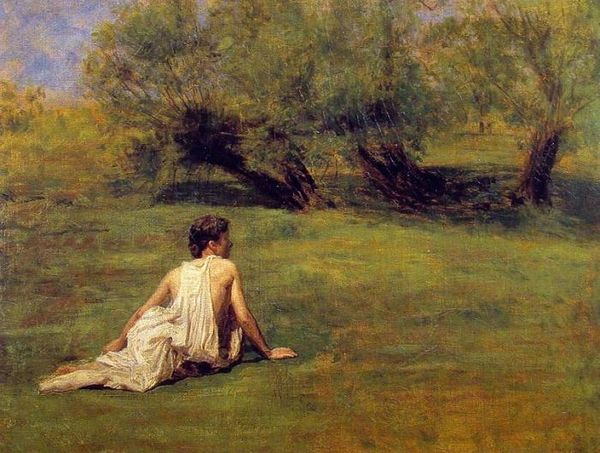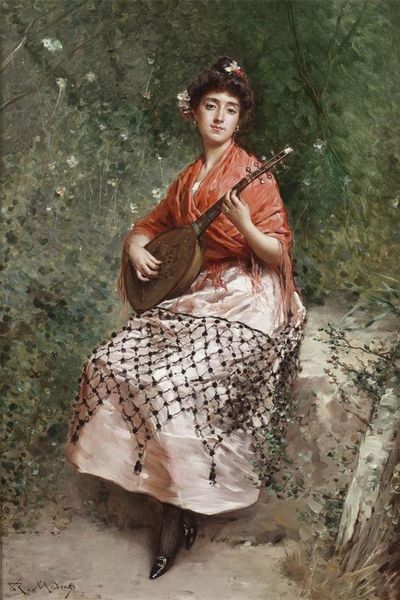
Dimensions: 51 x 80 cm
Copyright: Public domain
Editor: Here we have "Sicilian Odalisque," painted by Camille Corot in 1872, using oil paint. It strikes me as a bit of a mashup of styles. How would you interpret this work? Curator: It certainly presents an intriguing mix! The turban and the reclining pose immediately evoke the Orient, loaded with cultural connotations of the exotic and sensual that resonated deeply with 19th-century European viewers. The “odalisque” as a figure carries centuries of complex symbolic weight, originally tied to the Ottoman harem and subsequently adopted into European art. What symbols resonate with you? Editor: Well, the turban definitely says "exotic," but the Italianate landscape feels at odds with that, almost like a stage set. The background suggests a world available for European consumption. Curator: Precisely! The juxtaposition creates a symbolic tension. Corot is inviting us to consider Europe’s own relationship to its constructed “Orient.” She's holding some type of mandolin – a popular instrument for serenading; could the painter suggest that the exotic has been harmonized and Europeanized for public consumption? Editor: Interesting! So, it’s not just about the surface beauty but also about the act of cultural appropriation, perhaps? I’m starting to see the painting as less romantic and more of a statement. Curator: And what does her gaze tell us? She seems very aware, almost challenging the viewer's own perspective. I'd say the layering of cultural symbols contributes to the rich symbolism in this image, wouldn't you agree? Editor: Absolutely. I was so focused on the surface elements; it’s fascinating to dig into the layers of meaning hidden within these familiar images. Curator: Visual symbols always whisper stories waiting to be told; we simply need to listen with the right context in mind!
Comments
No comments
Be the first to comment and join the conversation on the ultimate creative platform.
